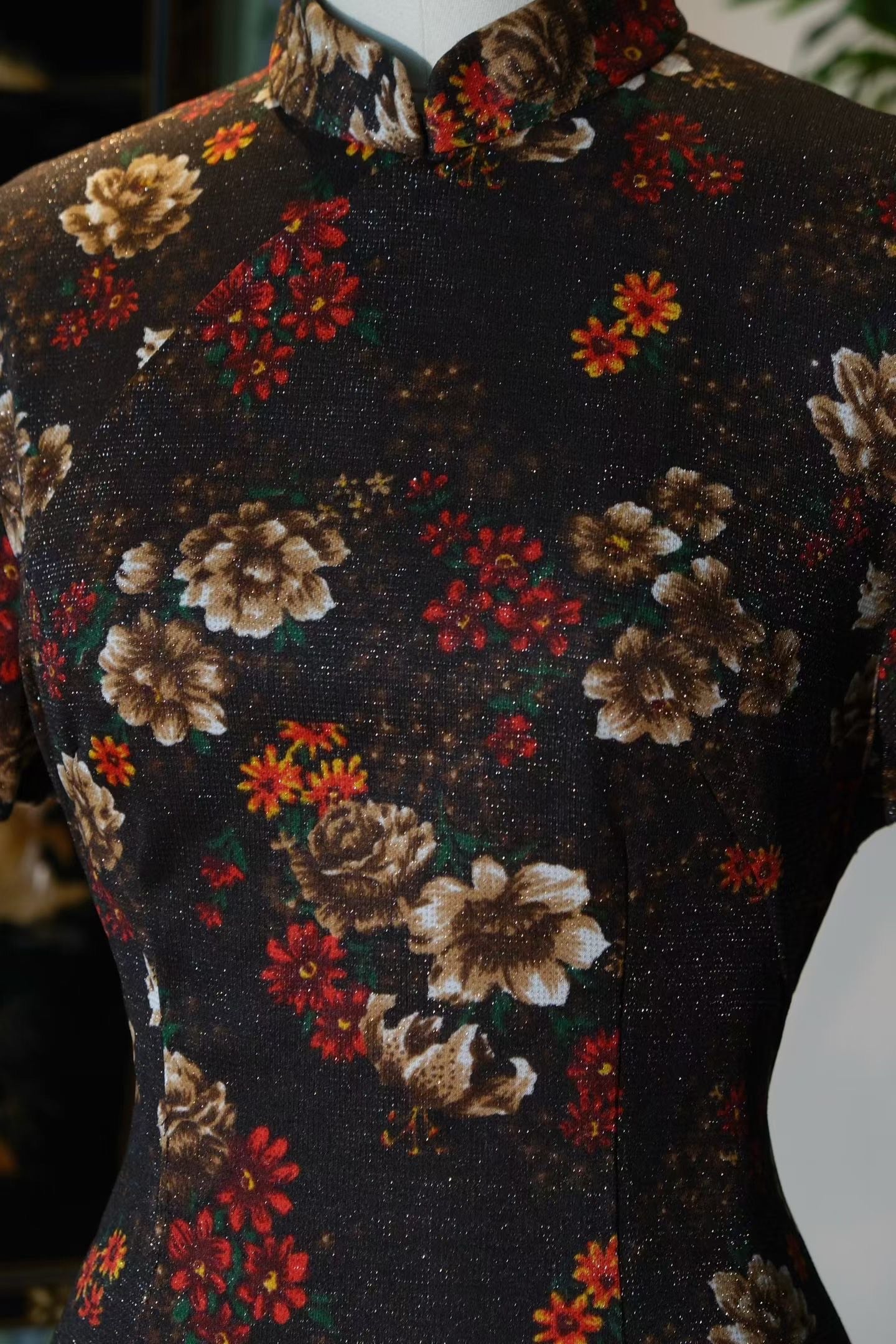深圳溯源
60年代 -「夜幕繁花」:六十年代台湾产满织银咖啡地繁花古董旗袍 / 1960s - "Midnight Blossoms": A 1960s Taiwanese Vintage Qipao with Full Lurex-Woven Dark Floral Print
60年代 -「夜幕繁花」:六十年代台湾产满织银咖啡地繁花古董旗袍 / 1960s - "Midnight Blossoms": A 1960s Taiwanese Vintage Qipao with Full Lurex-Woven Dark Floral Print
Couldn't load pickup availability
「夜幕繁花」:满织银光,张爱玲的参差对照与苏丽珍的倾城故事
分享一件上世纪六十年代台湾产的满织银咖啡地繁花古董旗袍。 它是一帧定格的胶片,捕捉了六十年代港台的独特烟雨风情。
旗袍的褐色织物如夜幕铺展,深沉而内敛。整件旗袍通体满织银色细线,勾勒出岁月的微光,在幽暗的街灯下尤其璀璨。这种源自意大利的织银工艺将金属丝巧妙地揉入经纬,阳光下流转的银光,恰似王家卫电影中胶片划过的暧昧波纹,流光溢彩,为这件古董旗袍平添了一份迷离的电影感。
繁花在襟上盛放,深红、橘色与米白的花朵热烈而浓郁,恍若《花样年华》里苏丽珍旗袍上那些摇曳的纹样。张爱玲笔下的**“参差的对照”在此具象**:浓烈的花卉挣脱暗色底,却又被旗袍黑漆檀木般的剪裁和立领微昂的矜持设计收束成一种体面的风情。
旗袍的线条,裹住了时光的曲线,将穿着者塑造成五十年代末热带海岛上优雅的女性形象。她们在骑楼转身,衣裾带起的风,是属于那个时代的矜持与缱绻——正如《花样年华》里,每一件旗袍都是未说出口的倾城故事。它不止是一件衣裳,它是一段未完待续的复古传奇。
"Midnight Blossoms": Lurex Glamour, Eileen Chang's Contrast, and the Untold Tale of Su Li-zhen
We present a 1960s Taiwanese vintage Qipao, featuring a full lurex-woven, coffee-ground dark floral print. This garment is a film frame come to life, capturing the unique, misty romance of 1960s Hong Kong and Taiwan.
The Qipao's brown fabric unfurls like the midnight sky, deep and restrained. The entire piece is richly woven with fine silver lurex threads, outlining a subtle historical glow that particularly dazzles under the warm glow of streetlamps. This Italian-influenced lurex technique seamlessly integrates metallic filaments into the weave, creating a shimmering effect under the sunlight that resembles the ambiguous ripples of a film strip passing through a projector—luminous and intoxicatingly cinematic.
The blossoms flourish across the bodice, with deep red, orange, and creamy white flowers appearing rich and intense, recalling the swaying patterns seen on Su Li-zhen's Qipaos in In the Mood for Love. Eileen Chang’s concept of "contrasting juxtapositions" is materialized here: the passionate florals strain against the dark base but are simultaneously contained by the Qipao’s sleek, ebony-like tailoring and the reserved elegance of its slightly raised mandarin collar.
The dress's silhouette, hugging the curves of time, molds the wearer into the elegant female figure of the late 1950s tropical islands. As these women turned beneath the colonnades, the breeze stirred by their hems carried the reserve and tenderness of that era—just as in In the Mood for Love, every Qipao is an unspoken, captivating story. This is more than a dress; it is an ongoing vintage legend.
Share






